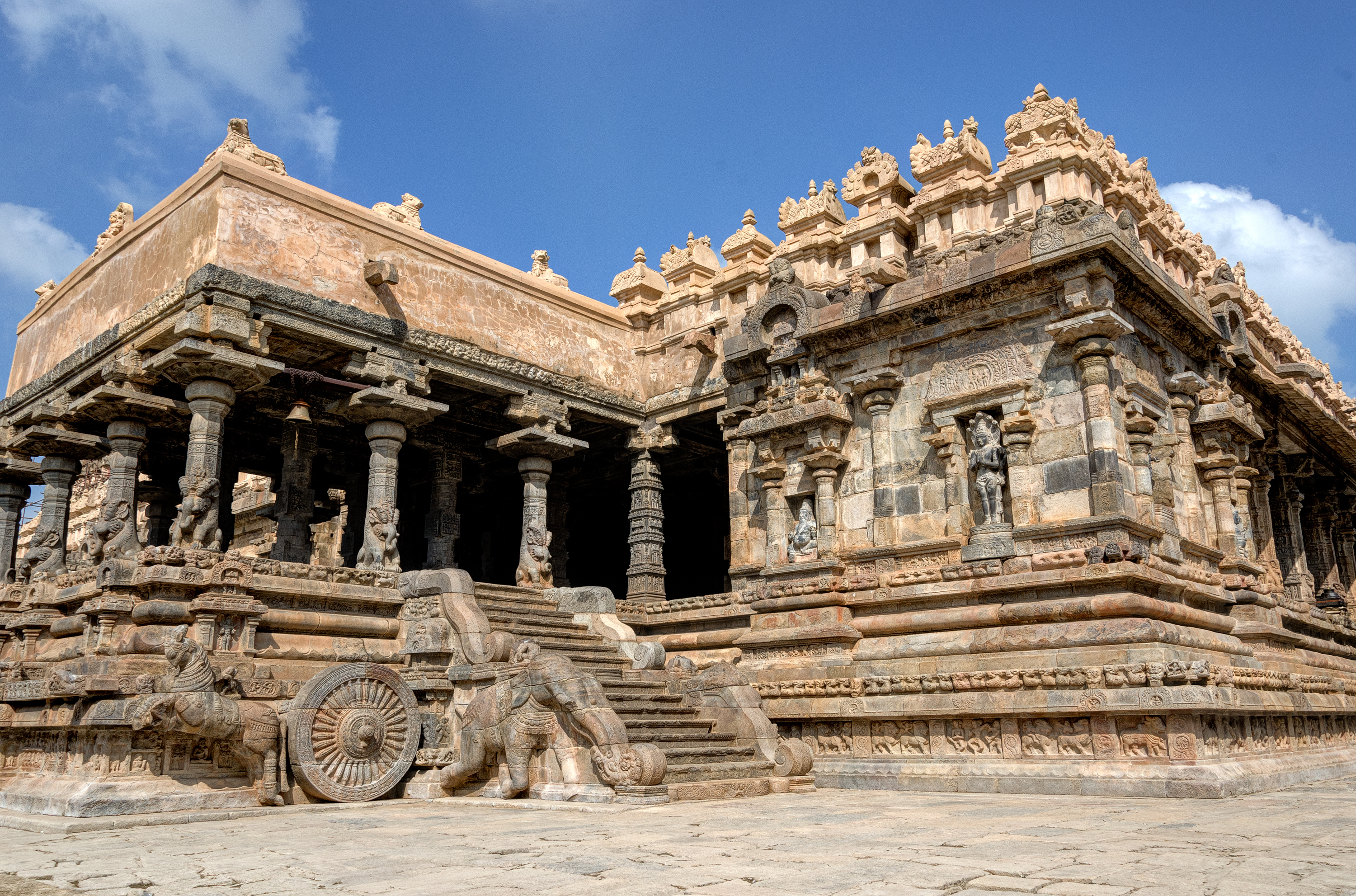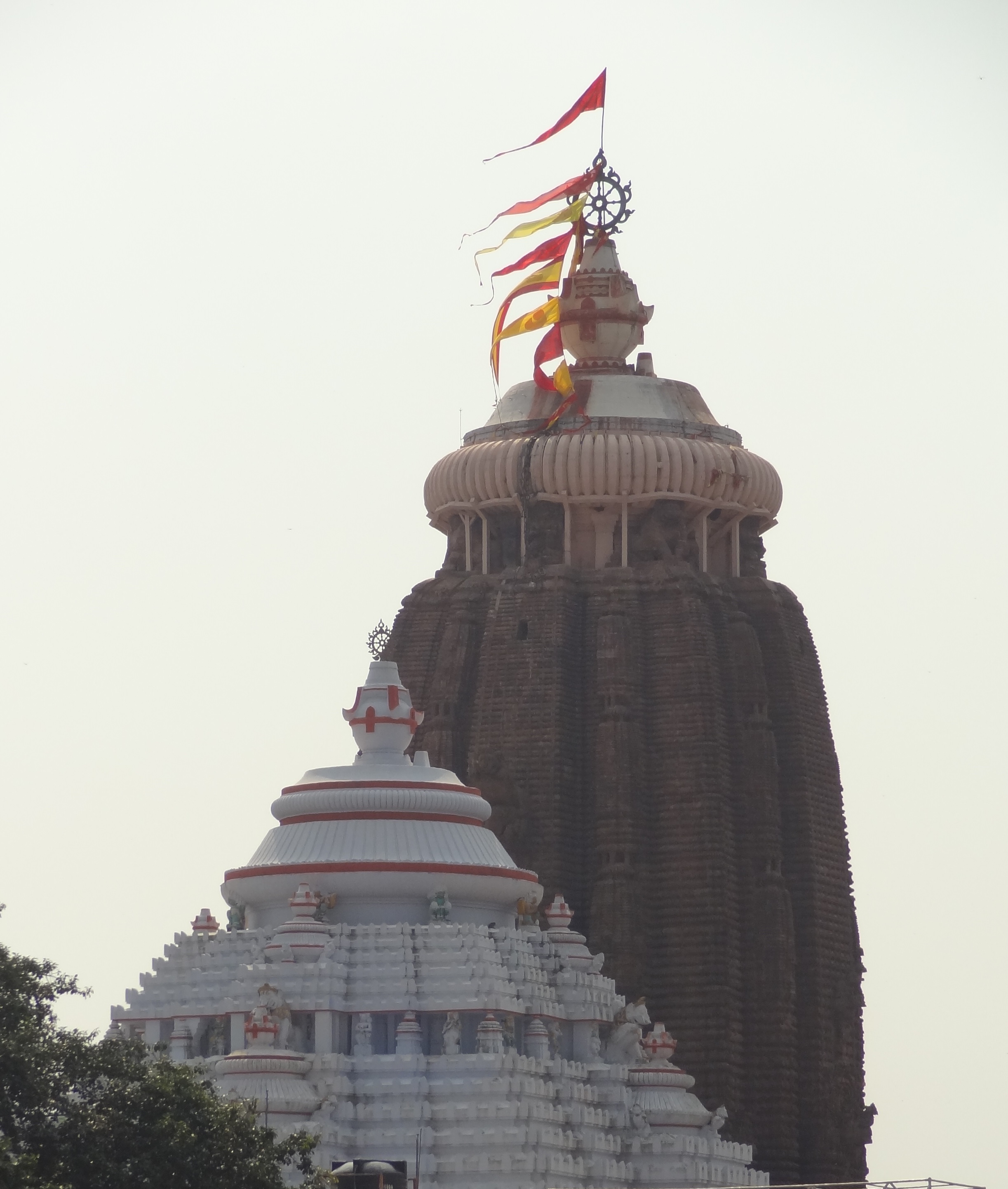|
Gopuram
A ''gopuram'' or ''gopura'' ( Tamil: கோபுரம், Malayalam: ഗോപുരം, Kannada: ಗೋಪುರ, Telugu: గోపురం) is a monumental entrance tower, usually ornate, at the entrance of a Hindu temple, in the South Indian architecture of the Southern Indian states of Tamil Nadu, Andhra Pradesh, Kerala, Karnataka, and Telangana, and Sri Lanka. In other areas of India they are much more modest, while in Southern Indian temples they are very often by far the highest part of the temple. Ancient and early medieval temples feature smaller ''gopuram'', while in later temples they are a prominent feature of Hindu Dravidian style; in many cases the temple compound was expanded and new larger gopuram built along the new boundary. They are topped by the '' kalasam'', a bulbous stone finial. They function as gateways through the walls that surround the temple complex. Another towering structure located towards the center of the temple is the Vimanam. Both o ... [...More Info...] [...Related Items...] OR: [Wikipedia] [Google] [Baidu] |
Tamil Architecture
Nearly 33,000 ancient temples, many at least 800 to 2000 years old, are found scattered all over Tamil Nadu. As per Tamil Nadu Hindu Endowments Board, there are 38,615 temples. Most of the largest Hindu Temples reside here. Studded with complex architecture, variety of sculptures, and rich inscriptions, the temples remain the very essence of the culture and heritage of Tamil land, with historical records dating back to at least 3,000 years. The state also abounds with a large number of temple tanks. The state has 2,359 temple tanks located in 1,586 temples and also confluence of many architectural styles, from ancient temples to the Indo-Saracenic style (pioneered in Madras) of the colonial era, to churches and mosques, to the 20th-century steel and chrome of skyscrapers. History Throughout Tamil Nadu, a king was considered to be divine by nature and possessed religious significance. The king was 'the representative of God on earth’ and lived in a "koyil", which means t ... [...More Info...] [...Related Items...] OR: [Wikipedia] [Google] [Baidu] |
Vimana (architectural Feature)
''Vimana'' is the structure over the ''garbhagriha'' or inner sanctum in the Hindu temples of South India and Odisha in East India. In typical temples of Odisha using the Kalinga style of architecture, the ''vimana'' is the tallest structure of the temple, as it is in the ''shikhara'' towers of temples in West and North India. By contrast, in large South Indian temples, it is typically smaller than the great gatehouses or '' gopuram'', which are the most immediately striking architectural elements in a temple complex. A ''vimana'' is usually shaped as a pyramid, consisting of several stories or ''tala''. ''Vimana'' are divided in two groups: ''jati vimanas'' that have up to four ''tala'' and ''mukhya vimana'' that have five ''tala'' and more. In North Indian temple architecture texts, the superstructure over the ''garbhagriha'' is called a ''shikhara''. However, in South Indian Hindu architecture texts, the term ''shikhara'' means a dome-shaped crowning cap above the ''vimana''. ... [...More Info...] [...Related Items...] OR: [Wikipedia] [Google] [Baidu] |
Hindu Temple
A Hindu temple, or ''mandir'' or ''koil'' in Indian languages, is a house, seat and body of divinity for Hindus. It is a structure designed to bring human beings and gods together through worship, sacrifice, and devotion.; Quote: "The Hindu temple is designed to bring about contact between man and the gods" (...) "The architecture of the Hindu temple symbolically represents this quest by setting out to dissolve the boundaries between man and the divine". The symbolism and structure of a Hindu temple are rooted in Vedic traditions, deploying circles and squares. It also represents recursion and the representation of the equivalence of the macrocosm and the microcosm by astronomical numbers, and by "specific alignments related to the geography of the place and the presumed linkages of the deity and the patron". A temple incorporates all elements of the Hindu cosmos — presenting the good, the evil and the human, as well as the elements of the Hindu sense of cyclic time and ... [...More Info...] [...Related Items...] OR: [Wikipedia] [Google] [Baidu] |
Southern India
South India, also known as Dakshina Bharata or Peninsular India, consists of the peninsular southern part of India. It encompasses the Indian states of Andhra Pradesh, Karnataka, Kerala, Tamil Nadu, and Telangana, as well as the union territories of Lakshadweep and Puducherry, comprising 19.31% of India's area () and 20% of India's population. Covering the southern part of the peninsular Deccan Plateau, South India is bounded by the Bay of Bengal in the east, the Arabian Sea in the west and the Indian Ocean in the south. The geography of the region is diverse with two mountain ranges – the Western and Eastern Ghats – bordering the plateau heartland. The Godavari, Krishna, Kaveri, Tungabhadra, Periyar, Bharathappuzha, Pamba, Thamirabarani, Palar, and Vaigai rivers are important perennial rivers. The majority of the people in South India speak at least one of the four major Dravidian languages: Tamil, Telugu, Malayalam and Kannada (all 4 of which are among the ... [...More Info...] [...Related Items...] OR: [Wikipedia] [Google] [Baidu] |
Hindu Temple Architecture
Hindu temple architecture as the main form of Hindu architecture has many varieties of style, though the basic nature of the Hindu temple remains the same, with the essential feature an inner sanctum, the '' garbha griha'' or womb-chamber, where the primary ''Murti'' or the image of a deity is housed in a simple bare cell. This chamber often has an open area designed for movement in clockwise rotation for rituals and prayers. Around this chamber there are often other structures and buildings, in the largest cases covering several acres. On the exterior, the garbhagriha is crowned by a tower-like ''shikhara'', also called the '' vimana'' in the south. The shrine building often includes an circumambulatory passage for parikrama, a mandapa congregation hall, and sometimes an antarala antechamber and porch between garbhagriha and mandapa. There may be other mandapas or other buildings, connected or detached, in large temples, together with other small temples in the compound. ... [...More Info...] [...Related Items...] OR: [Wikipedia] [Google] [Baidu] |
Dravidian Architecture
Dravidian architecture, or the South Indian temple style, is an architectural idiom in Hindu temple architecture that emerged from South India, reaching its final form by the sixteenth century. It is seen in Hindu temples, and the most distinctive difference from north Indian styles is the use of a shorter and more pyramidal tower over the garbhagriha or sanctuary called a vimana, where the north has taller towers, usually bending inwards as they rise, called shikharas. However, for modern visitors to larger temples the dominating feature is the high gopura or gatehouse at the edge of the compound; large temples have several, dwarfing the vimana; these are a much more recent development. There are numerous other distinct features such as the ''dwarapalakas'' – twin guardians at the main entrance and the inner sanctum of the temple and ''goshtams'' – deities carved in niches on the outer side walls of the garbhagriha. Mentioned as one of three styles of temple buildin ... [...More Info...] [...Related Items...] OR: [Wikipedia] [Google] [Baidu] |
Tamil Nadu
Tamil Nadu (; , TN) is a state in southern India. It is the tenth largest Indian state by area and the sixth largest by population. Its capital and largest city is Chennai. Tamil Nadu is the home of the Tamil people, whose Tamil language—one of the longest surviving classical languages in the world—is widely spoken in the state and serves as its official language. The state lies in the southernmost part of the Indian peninsula, and is bordered by the Indian union territory of Puducherry and the states of Kerala, Karnataka, and Andhra Pradesh, as well as an international maritime border with Sri Lanka. It is bounded by the Western Ghats in the west, the Eastern Ghats in the north, the Bay of Bengal in the east, the Gulf of Mannar and Palk Strait to the south-east, and the Indian Ocean in the south. The at-large Tamilakam region that has been inhabited by Tamils was under several regimes, such as the Sangam era rulers of the Chera, Chola, and Pandya c ... [...More Info...] [...Related Items...] OR: [Wikipedia] [Google] [Baidu] |
Kalasam
A kalasam is a finial typically placed atop the towers of Hindu temples. These kalasams, in the form of an inverted pot with a point facing the sky, are prominent elements of temple architecture. Periodic renewal of the temple is called ''samprokshanam'' or ''kumbhabishekam'' (when held as a festival) and focuses on the kalasams. Elaborate rituals are performed along with renewing the temple's physical structures. Most kalasams are made of metal and some of stone. The view of the gopuram (temple tower) is one of the important rituals of Hindu worship along with view of ''dwajasthambam The dhvajastambha (ध्वजस्तम्भ) refers to the flagstaff erected in front of the ''mukhamaṇḍapa'' (front pavilion) of a Hindu temple. The ''dhvajastambha'' is usually built within the temple walls (''prākāra''). They are t ...'' or ''kodimaram'' (temple flag mast). These ''gopurams'' are usually topped with ornamental kalasams. Some temples have four entrance towers which ... [...More Info...] [...Related Items...] OR: [Wikipedia] [Google] [Baidu] |
Shikhara
''Shikhara'' ( IAST: '), a Sanskrit word translating literally to "mountain peak", refers to the rising tower in the Hindu temple architecture of North India, and also often used in Jain temples. A ''shikhara'' over the '' garbhagriha'' chamber where the presiding deity is enshrined is the most prominent and visible part of a Hindu temple of North India. In South India, the equivalent term is ''vimana''; unlike the ''shikhara'', this refers to the whole building, including the sanctum beneath. In the south, ''shikhara'' is a term for the top stage of the vimana only, which is usually a dome capped with a finial; this article is concerned with the northern form. The southern ''vimana'' is not to be confused with the elaborate gateway-towers of south Indian temples, called '' gopuram'', which are often taller and more prominent features in large temples. Forms ''Shikhara'' can be classified into three main forms: *'' Latina''. The ''shikhara'' has four faces, which may incl ... [...More Info...] [...Related Items...] OR: [Wikipedia] [Google] [Baidu] |
Nayaka Dynasties
Nayaka dynasties emerged during the Kakatiya dynasty and the Vijayanagara Empire period. The Nayakas were originally military governors under the Vijayanagara Empire. After the battle of Talikota, several of them declared themselves independent. Major Nayaka kingdoms The Nayaka kingdoms included the following: *Musunuri Nayakas, 14th century Kamma warrior-kings from Telangana and Andhra Pradesh. * Pemmasani Nayaks, 15th–17th century Kamma ruling clan from Andhra Pradesh. * Madurai Nayak, 16th–18th century Telugu rulers. * Thanjavur Nayak, 16th–17th century Telugu rules of Thanjavur, Tamil Nadu. * Nayaks of Gingee (Senji), 16th–17th century Telugu rulers from Tamil Nadu, previously governors of the Vijayanagara Empire. * Nayakas of Chitradurga, 16th–18th century from Karnataka, previously feudatory chiefs of Hoysala and Vijayanagara Empire. * Nayakas of Keladi, 16th–18th century ruling dynasty from Keladi, Karnataka. * Nayaks of Vellore, 16th century Telugu chieft ... [...More Info...] [...Related Items...] OR: [Wikipedia] [Google] [Baidu] |
_2019_03.jpg)



_-_Oct_2010.jpg)
